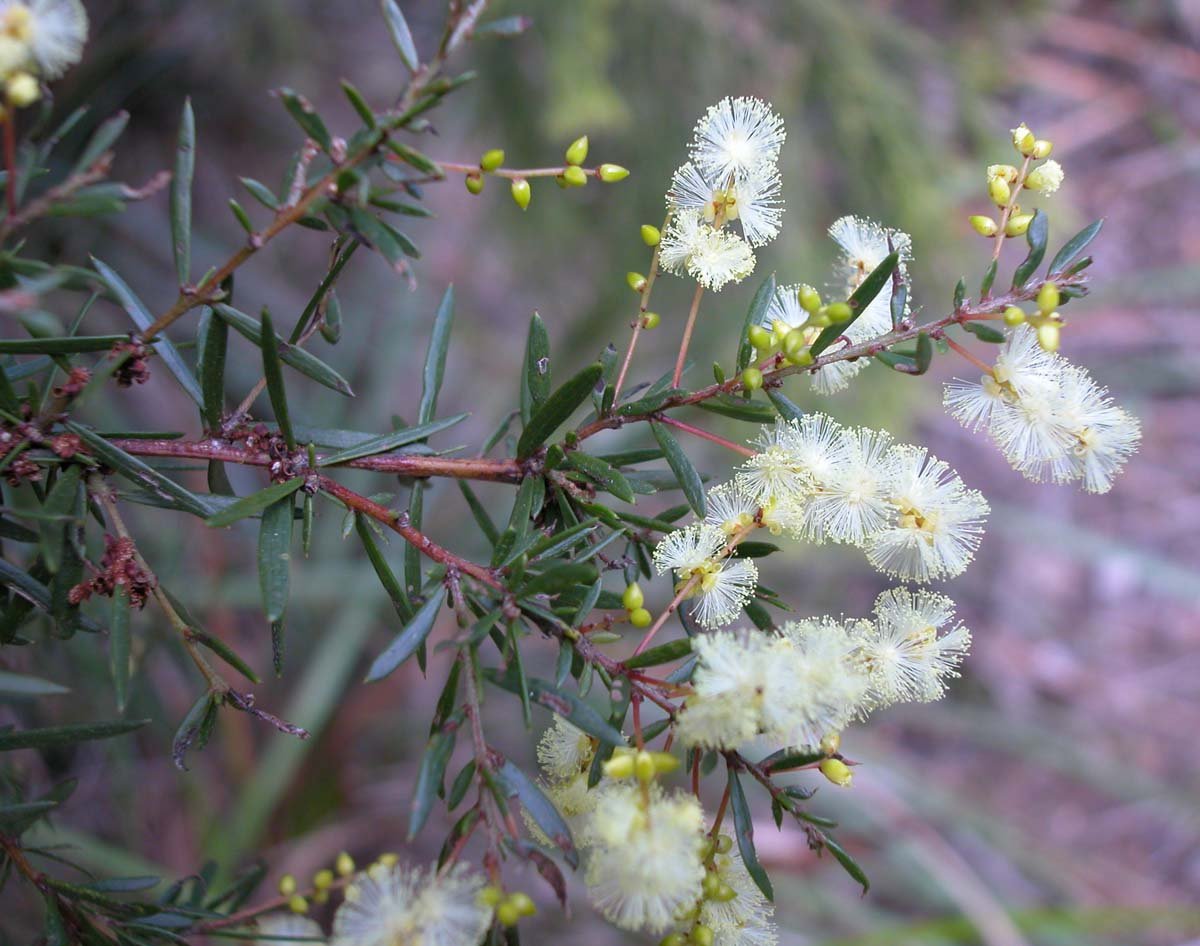Acacia riceana

Botanical Name: Acacia riceana
Common Name: rice’s wattle; arching wattle
Family: Mimosoideae
Size: Shrub to small tree, 3–10 m H
Leaves: Small, narrow-linear shape, tapering to sharp apex; scattered or clustered in whorls. Dark green with prominent central vein. 1.2–2.5 cm long, 1–3 mm wide.
Flowers: Flowers are few and scattered. Peduncles (stems) 3 cm long, grow from leaf axils (axillary) from which loose spikes of pale-yellow, blossoms hang
Flowering Time: Late winter, early spring
Fruit: Curved pod, 4-6 cm long, seeds shiny and elliptic, ripening in January - February
Habitat/distribution: Endemic to Tasmania, mostly in the southeast. Grows in shady, damp gullies, sometimes along waterways.
Where to See: Main populations found in the Derwent, Huon and Prosser River valleys, on slopes overlooking D’Entrecasteaux Channel from Southport to Margate. Smaller populations on the Tasman peninsula with a remote community on Maria Island.
Other notes: Originally thought to be a form of the endangered Midlands wattle (Acacia axillaris). Acacia riceana has a more pendulous shape and flowers hang from longer stems. Is fast growing. Described in 1839 by botanist John Henslow from a plant grown in the Cambridge Botanical Garden from seed sent from Tasmania. Named in honour of Thomas Rice a British cabinet minister at the time.
